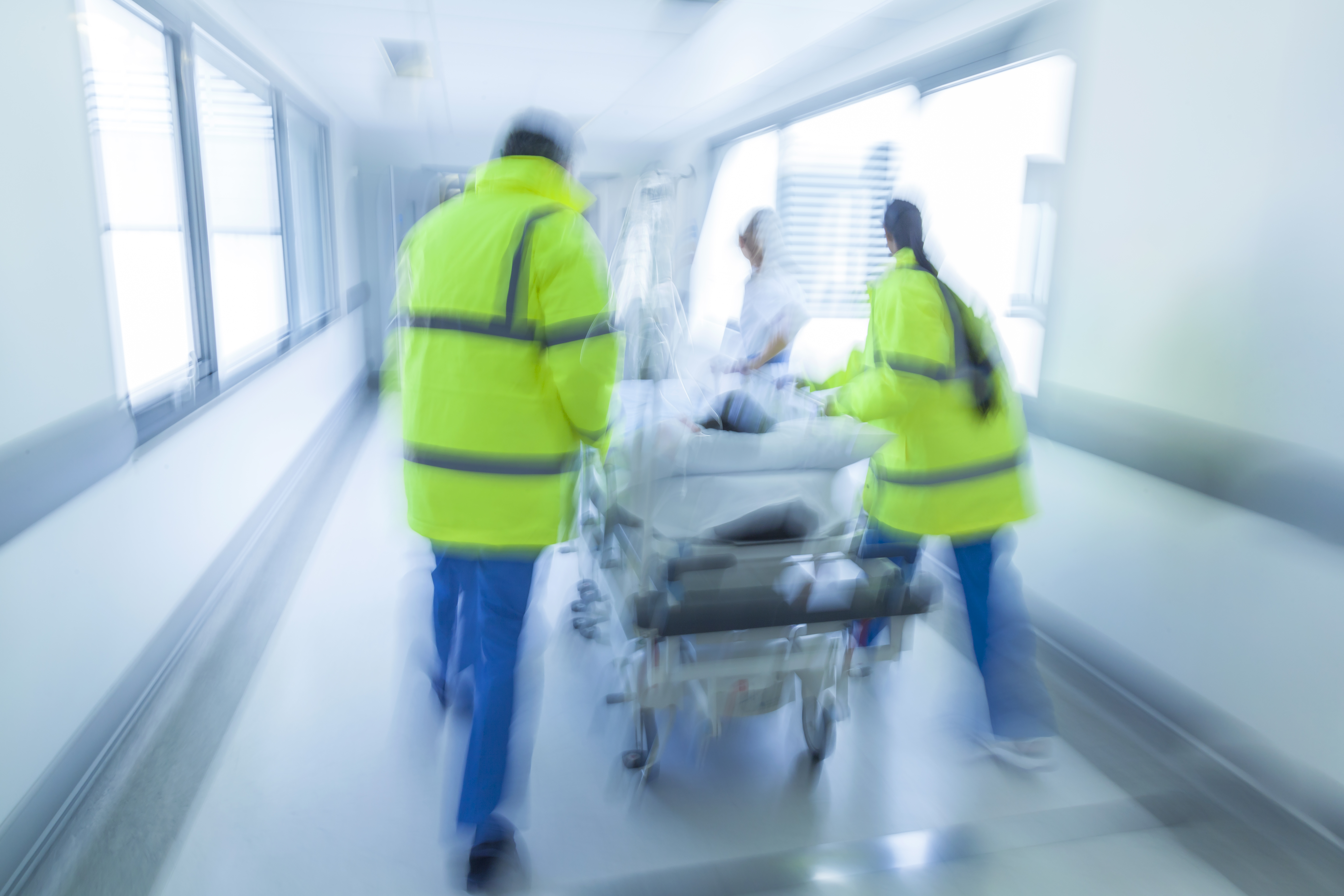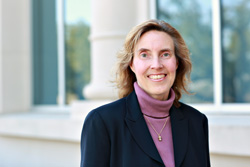Disaster Preparedness in Health Care
Hospitals must plan ahead or risk short staffing in crises, nursing professor finds.

Getty Images, Spotmatik
Disaster Preparedness in Health Care
Hospitals must plan ahead or risk short staffing in crises, nursing professor finds.

Investigator Lavonne Adams, associate professor of nursing, finds hospital administrators often overestimate how many staffers will show up during an emergency. Photo by Carolyn Cruz
During a disaster, delivery of health care is crucial. Wildfires, mass-casualty bus crashes and chemical spills call for a swift professional response. On television dramas set in hospitals, the entire staff mobilizes to triage the tide of incoming patients, treat the injured and comfort panicky people.
In the real world, hospital employees are often scrambling personally in a disaster and might not show up as expected, said Lavonne Adams, associate professor of nursing. She launched a study to gauge how many staffers would come to work in the midst of a chaotic situation.
The professor said she has witnessed hospital staff become unnerved when tornadoes struck while they were doing clinical rounds. Many staff members went home instead of staying to lend a hand. “People are not necessarily thrilled with the idea of being at work when their families are somewhere else,” she said.
Hospitals are required to plan for and rehearse a range of disasters, but those plans often focus on having sufficient medicines and treatment facilities. Health care administrators tend to assume the full staff will arrive on time and ready to work, Adams said.
Her research findings suggest those strategists should tap the brakes and get a better feel for the staffing facet of potential disasters, as personnel shortages could sabotage the careful planning.
Home vs. job
Health care professionals have a duty to care for others, Adams said, but what do they do about conflicting obligations between work and family?
To find out, Adams and Devon Berry of Wright State University sent a survey to personnel in a large health care network. The researchers asked respondents how they would react during hypothetical disaster scenarios.
Study participants, mostly nurses but also employees from other hospital departments, gave mixed answers about whether they would put work first during widespread chaos. Between 10 percent and 30 percent said that they would remain at home.
“I discovered that, indeed, not everybody is able to come to work or willing to come to work,” Adams said.
To complicate matters, some health care professionals might be overly confident about how they would respond, she said. “Our intent to be able — and our intent to be willing — is very different from what would actually happen.”
Survey respondents indicated that matters at home might present bigger barriers than closed roads or other transportation difficulties. Their top concerns were caring for children, elderly parents and pets.
Preventing shortages
The next phase of Adams’ research will examine how best to address potential staff shortages in case of real-world disasters.
Hospitals can enhance staff readiness by encouraging personal disaster preparedness and organizing child care, which could be offered on site during crisis situations.
During Hurricane Katrina in 2005, the professor noticed that volunteers in North Texas rushed to help coastal evacuees. But when asked, many volunteers acknowledged that they didn’t have personal disaster preparedness plans for themselves or their families.
Everyone needs emergency food and water supplies, copies of important documents and, most important, a firm plan about who will take care of what when the unexpected hits, Adams said. Her advice is even more true for health care professionals.
“People need to take a step back and take care of themselves first,” she said. “If people have a personal preparedness plan, they’re more likely to be able to respond.”

Your comments are welcome
Comments
Related reading:
Features
Female Equality in STEM Fields
Themes of lauded film Hidden Figures linger as conversations about gender bias continue, especially in STEM fields.
Features, Research + Discovery
Leading a Culture Change in Health Care
Faculty at the Harris College of Nursing & Health Sciences are helping fuse research with health care practice.
Features
Trauma care
Pre-Health Professions Institute students connect coursework to the real world as new emergency room interns.